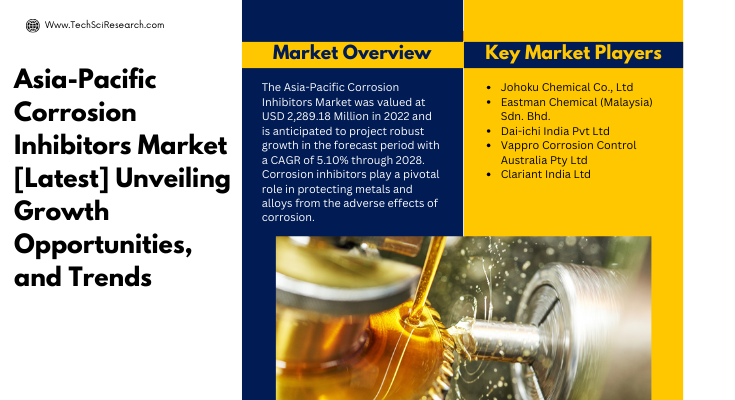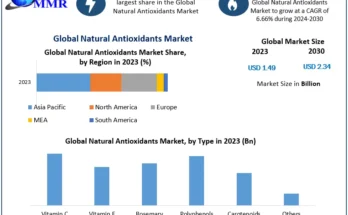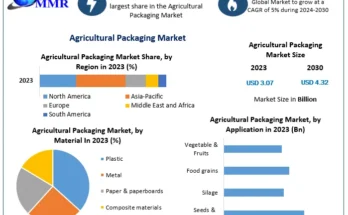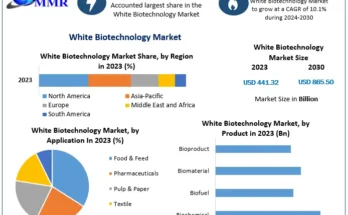According to TechSci Research report, “Asia-Pacific Corrosion Inhibitors Market – By Region, Competition, Forecast and Opportunities, 2018-2028”, Asia-Pacific Corrosion Inhibitors Market Size is USD 2,289.18 million in 2022 and is anticipated to increase at a CAGR of 5.10% through 2028. Corrosion represents an enduring and costly challenge across various industries, including transportation, infrastructure, and oil and gas production. In response to this pervasive issue, corrosion inhibitors have been formulated as specialized chemical compounds aimed at mitigating or preventing corrosion.
These inhibitors function by disrupting the electrochemical reactions that drive corrosion, typically by creating a protective layer on the metal surface. This protective layer can assume either a physical form, acting as a barrier that isolates the metal from the corrosive environment, or a chemical form that modifies the surface chemistry to render it less susceptible to corrosion. Corrosion inhibitors come in various types, tailored to specific applications and environmental conditions.
Anodic inhibitors thwart oxidation reactions at the metal’s anode (positively charged electrode), while cathodic inhibitors hinder reduction reactions at the cathode (negatively charged electrode). Mixed inhibitors are versatile compounds capable of addressing both anodic and cathodic processes, offering comprehensive protection. Passivation inhibitors enhance the formation of passive oxide layers on metal surfaces, effectively shielding them from corrosion.
Among the most renowned corrosion inhibitors are chromate-based ones, which have been widely recognized for their efficacy. However, concerns regarding their toxicity and environmental impact have led to the development and adoption of alternative inhibitors. In recent years, organic inhibitors, encompassing organic salts, amines, and compounds containing heteroatoms like nitrogen and sulfur, have gained prominence due to their reduced environmental footprint and improved safety profiles.
Furthermore, corrosion inhibitors find extensive applications across a diverse spectrum of industries. In the transportation sector, these inhibitors are indispensable for safeguarding vehicles and infrastructure against rust and corrosion, thereby prolonging their operational life and ensuring safety.
The aviation industry places substantial reliance on corrosion inhibitors to protect aircraft from the corrosive effects of high-altitude flight and exposure to diverse environmental conditions. In the oil and gas sector, where metal structures contend with harsh environments, corrosion inhibitors play an essential role in preserving the integrity of pipelines, drilling equipment, and offshore platforms. Within the construction and infrastructure sector, corrosion inhibitors are vital for the preservation of critical elements such as bridges and buildings, effectively reducing maintenance costs and enhancing overall safety.
Browse over XX market data Figures spread through XX Pages and an in-depth TOC on “Asia-Pacific Corrosion Inhibitors Market” @ https://www.techsciresearch.com/report/asia-pacific-corrosion-inhibitors-market/17300.html
Moreover, the mechanisms by which corrosion inhibitors operate vary based on the inhibitor type and the specific environmental conditions in which they are employed. For example, organic inhibitors function by adsorbing onto the metal surface, thereby establishing a protective film that serves as a physical barrier against corrosive agents. Conversely, inorganic inhibitors like chromates induce passivation of the metal surface, triggering the formation of a protective oxide layer. This layer effectively impedes subsequent corrosion by inhibiting the electrochemical reactions responsible for metal deterioration.
The Asia-Pacific Corrosion Inhibitors Market is segmented into type, composition, application, country distribution, region, and company.
Based on the type, the water-based segment is expected to register the highest growth of 5.26% during the forecast period 2024-2028. Water-based corrosion inhibitors present numerous advantages that position them as the preferred option in various industries. Their environmentally friendly characteristics result in minimal harm to ecosystems and human health in comparison to their solvent-based counterparts. Water-based inhibitors also align with strict environmental regulations by reducing the emission of volatile organic compounds (VOCs). Their low toxicity and non-flammable properties enhance workplace safety, effectively reducing the risk of accidents.
Furthermore, water-based formulations demonstrate versatility, as they can be readily mixed and applied, enhancing cost-effectiveness and convenience in industrial processes. Moreover, they excel in providing corrosion protection by establishing a robust protective barrier on metal surfaces, resulting in extended equipment lifespan and reduced maintenance expenses.
Water-based corrosion inhibitors are especially well-suited for systems exposed to water, including cooling systems and pipelines, thereby promoting sustainable and responsible corrosion control practices. In essence, these inhibitors seamlessly integrate effective corrosion protection with environmental responsibility, making them invaluable assets across a diverse range of industries.
Based on the composition, the organic segment is expected to register the highest growth of 5.56% during the forecast period 2024-2028. Organic-type corrosion inhibitors offer numerous advantages that make them indispensable in the ongoing battle against corrosion. To begin with, their environmentally friendly characteristics, often characterized by biodegradability and reduced toxicity compared to other inhibitor types, align perfectly with the growing emphasis on sustainability and eco-friendly practices across various industries.
Organic inhibitors demonstrate exceptional versatility and compatibility with a wide range of materials and systems, making them suitable for diverse applications, from industrial processes to the marine and automotive sectors. Their ability to form a protective film on metal surfaces plays a pivotal role in reducing corrosion rates, ultimately extending the lifespan of critical equipment and structures.
Furthermore, organic inhibitors are renowned for their long-lasting protection, reducing the need for frequent reapplication and, as a result, lowering maintenance costs. Additionally, they prove effective across a broad range of temperatures and pH levels, ensuring reliable corrosion protection even in diverse and challenging environmental conditions. Therefore, organic-type corrosion inhibitors seamlessly combine effectiveness, environmental responsibility, and versatility, establishing themselves as the preferred choice for industries seeking robust and sustainable corrosion control solutions.
Based on the application, the oil & gas refinery segment is expected to register the highest growth of 6.25% during the forecast period, 2024-2028. Corrosion inhibitors play a pivotal and enduring role in the oil and gas refinery industry, where the ongoing battle against corrosion is a constant and critical challenge. Refineries, by their very nature, are intricate and demanding environments that subject their equipment and pipelines to a combination of harsh factors, including aggressive chemicals, high temperatures, and moisture levels. These conditions can accelerate the corrosion process, posing significant risks. To counteract this formidable adversary, both organic and inorganic corrosion inhibitors are introduced into the refining process. Their primary function is to create protective layers on metal surfaces, effectively acting as shields against the harmful effects of corrosive agents.
In the context of pipelines, these inhibitors play a vital role in mitigating the potential for internal corrosion, a concern heightened by the corrosive nature of hydrocarbons and water content. Within the domain of storage tanks, corrosion inhibitors prove invaluable in preventing the deterioration of tank walls and bottoms.
In doing so, they safeguard valuable assets while minimizing the risk of leaks or spills. Moreover, these inhibitors contribute to extending the operational lifespan of critical refining equipment, such as heat exchangers and distillation columns, thereby reducing downtime and curtailing maintenance costs. As the oil and gas industry continues to undergo transformation and evolution, the use of corrosion inhibitors remains an indispensable practice.
These inhibitors are essential in ensuring the safety, efficiency, and sustainability of refinery operations, reinforcing their enduring significance within this vital sector.
Based on country, China will witness the fastest growth during the forecast period, 2024-2028. The demand for corrosion inhibitors in China has been on a significant upward trajectory in recent years, driven by the country’s rapid industrialization and infrastructure development. As China continues to expand its industrial sectors, such as oil and gas, petrochemicals, construction, and manufacturing, there is a growing need to protect critical equipment, structures, and pipelines from the corrosive effects of harsh operating environments. Corrosion poses a substantial economic burden on industries, leading to costly repairs, maintenance, and downtime.
Therefore, Chinese industries are increasingly recognizing the value of corrosion prevention and mitigation, which has fueled the demand for corrosion inhibitors. In particular, China’s vast network of pipelines, both for the transportation of oil and gas and for water distribution, requires effective corrosion protection to ensure the integrity and safety of these crucial assets.
The country’s expanding maritime industry, which includes shipbuilding and offshore oil exploration, also relies heavily on corrosion inhibitors to combat the corrosive effects of seawater. Additionally, the construction boom in China has led to the creation of numerous infrastructure projects, such as bridges, buildings, and transportation systems, all of which necessitate corrosion protection to ensure their long-term durability.
Furthermore, as environmental regulations become more stringent in China, industries are seeking environmentally friendly corrosion inhibitor solutions that comply with sustainability and safety standards. The awareness of the environmental impact of industrial processes has led to a shift towards green and sustainable corrosion prevention practices. China’s robust manufacturing sector, which produces a wide range of goods for both domestic consumption and export, requires corrosion protection for machinery and equipment. This sector’s growth further contributes to the demand for corrosion inhibitors.
Major companies operating in the Asia-Pacific Corrosion Inhibitors Market are:
- Johoku Chemical Co., Ltd
- Eastman Chemical (Malaysia) Sdn. Bhd.
- Dai-ichi India Pvt Ltd
- Vappro Corrosion Control Australia Pty Ltd
- Clariant India Ltd
- Dorfketal Chemicals (I) Pvt. Ltd.
Download Free Sample Report @ https://www.techsciresearch.com/sample-report.aspx?cid=17300
Customers can also request for 10% free customization on this report
“As industries strive for sustainability, the demand for environmentally friendly corrosion inhibitors is on the rise. This growing emphasis on eco-friendly practices and stringent environmental regulations positions green inhibitors as a focal point for market growth. Furthermore, the customization of corrosion inhibitors tailored to specific industry needs is gaining traction, offering a promising avenue for market expansion. Industries such as oil and gas, transportation, construction, and infrastructure rely heavily on these inhibitors to protect critical assets and infrastructure, fostering a steady demand creates a lucrative opportunity for market growth,” said Mr. Karan Chechi, Research Director with TechSci Research, a research-based management consulting firm.
“Asia-Pacific Corrosion Inhibitors Market, By Type (Water-based, Oil/Solvent based, Vapour based), By Composition (Organic, Inorganic), By Application (Power Generation, Oil & Gas Refinery, Metalwork & Mining, Others), By Country, By Competition Forecast & Opportunities, 2018-2028F”, has evaluated the future growth potential of Asia-Pacific Corrosion Inhibitors Market and provides statistics & information on market size, structure, and future market growth. The report intends to provide cutting-edge market intelligence and help decision-makers take sound investment decisions. Besides, the report also identifies and analyzes the emerging trends along with essential drivers, challenges, and opportunities in Asia-Pacific Corrosion Inhibitors Market.
You may also read:
United States Hydroxyapatite Market – Current Analysis and Forecast [2028]
United States Hot Melt Adhesives Market – Competitive Landscape and Innovation
Asia-Pacific Agrochemical Intermediates Market [2028]- Exploring Robust Growth & Forecast
Acoustic Materials Market – Rising Demand and Growth Trends
Europe Green Methanol Market Set for XX.XX% CAGR Through 2028- Forecasted Growth
Table of Content-Asia-Pacific Corrosion Inhibitors Market
- Product Overview
1.1. Market Definition
1.2. Scope of the Market
1.2.1. Markets Covered
1.2.2. Years Considered for Study
1.2.3. Key Market Segmentations
- Research Methodology
2.1. Objective of the Study
2.2. Baseline Methodology
2.3. Key Industry Partners
2.4. Major Association and Secondary Sources
2.5. Forecasting Methodology
2.6. Data Triangulation & Validation
2.7. Assumptions and Limitations
- Executive Summary
3.1. Overview of the Market
3.2. Overview of Key Market Segmentations
3.3. Overview of Key Market Players
3.4. Overview of Key Regions
3.5. Overview of Market Drivers, Challenges, Trends
- Voice of Customer
- Impact of COVID-19 on Asia-Pacific Corrosion Inhibitors Market
- Asia-Pacific Corrosion Inhibitors Market Outlook
6.1. Market Size & Forecast
6.1.1. By Value & Volume
6.2. Market Share & Forecast
6.2.1. By Type (Water-based, Oil/Solvent based, Vapour based)
6.2.2. By Composition (Organic, Inorganic)
6.2.3. By Application (Power Generation, Oil & Gas Refinery, Metalwork & Mining, Others)
6.2.4. By Country (China, India, Japan, South Korea, Australia, Thailand, Indonesia, Vietnam, Malaysia, Singapore)
6.2.5. By Company (2022)
6.3. Market Map
6.3.1. By Type
6.3.2. By Composition
6.3.3. By Application
6.3.4. By Country




